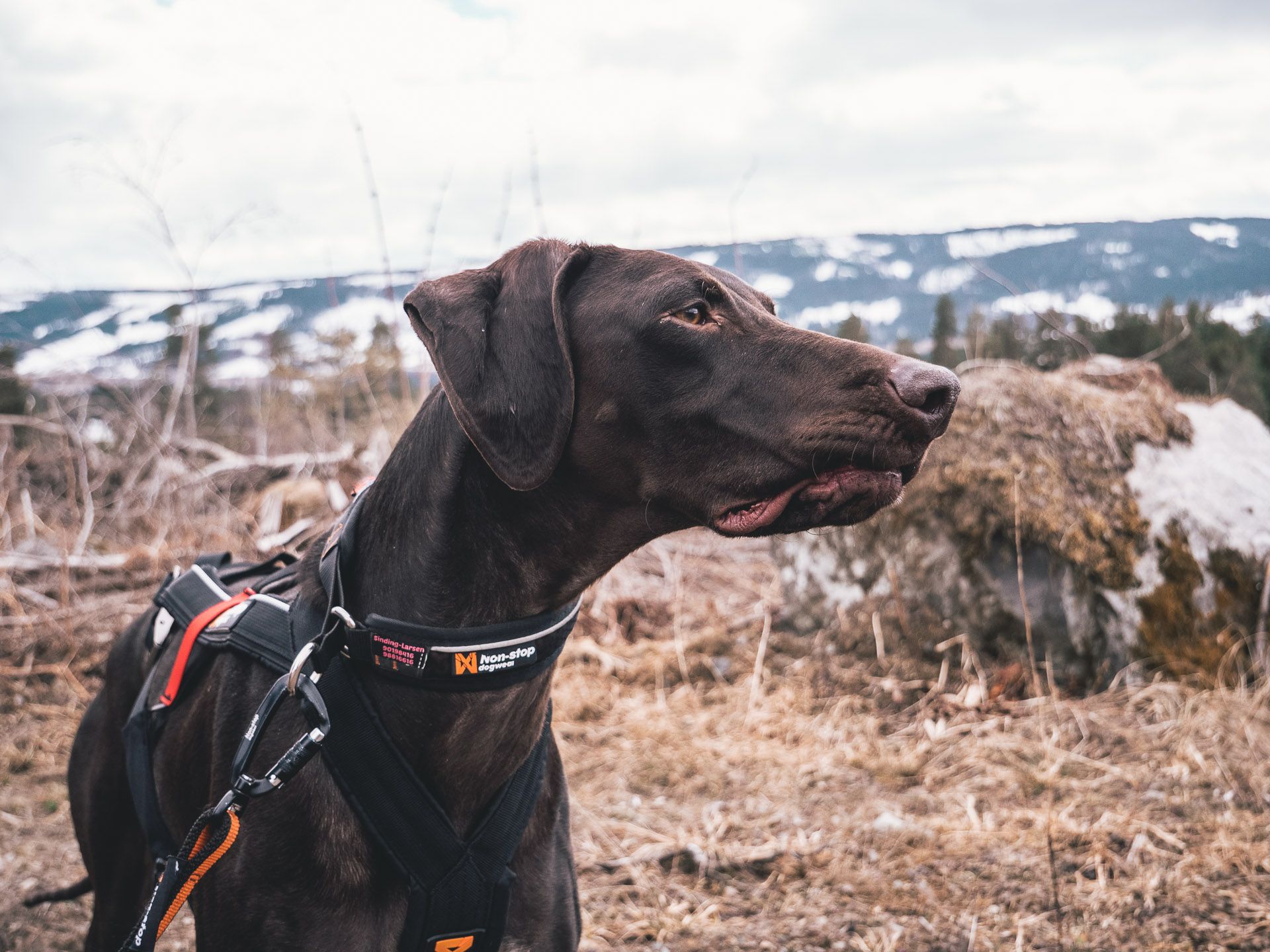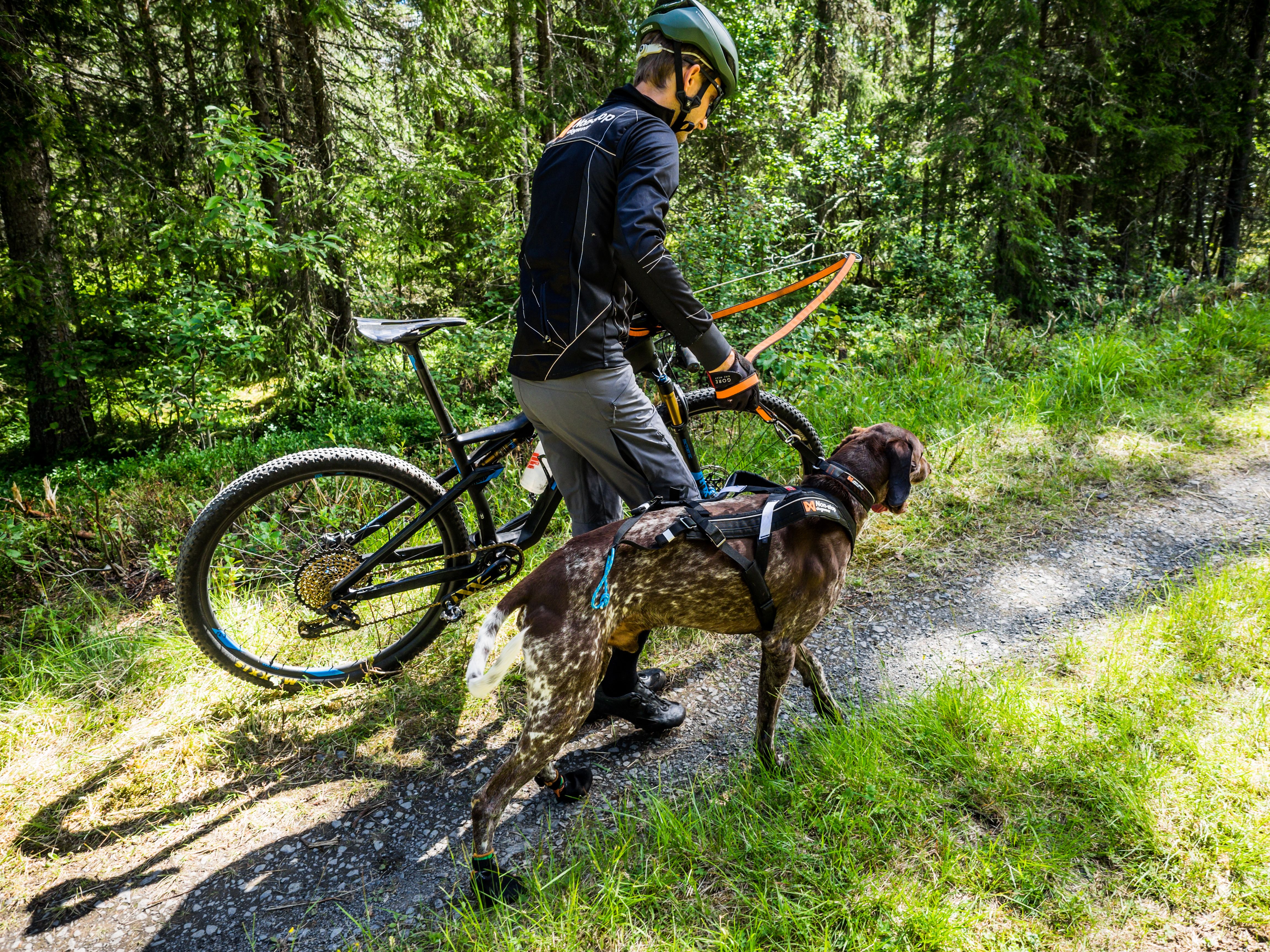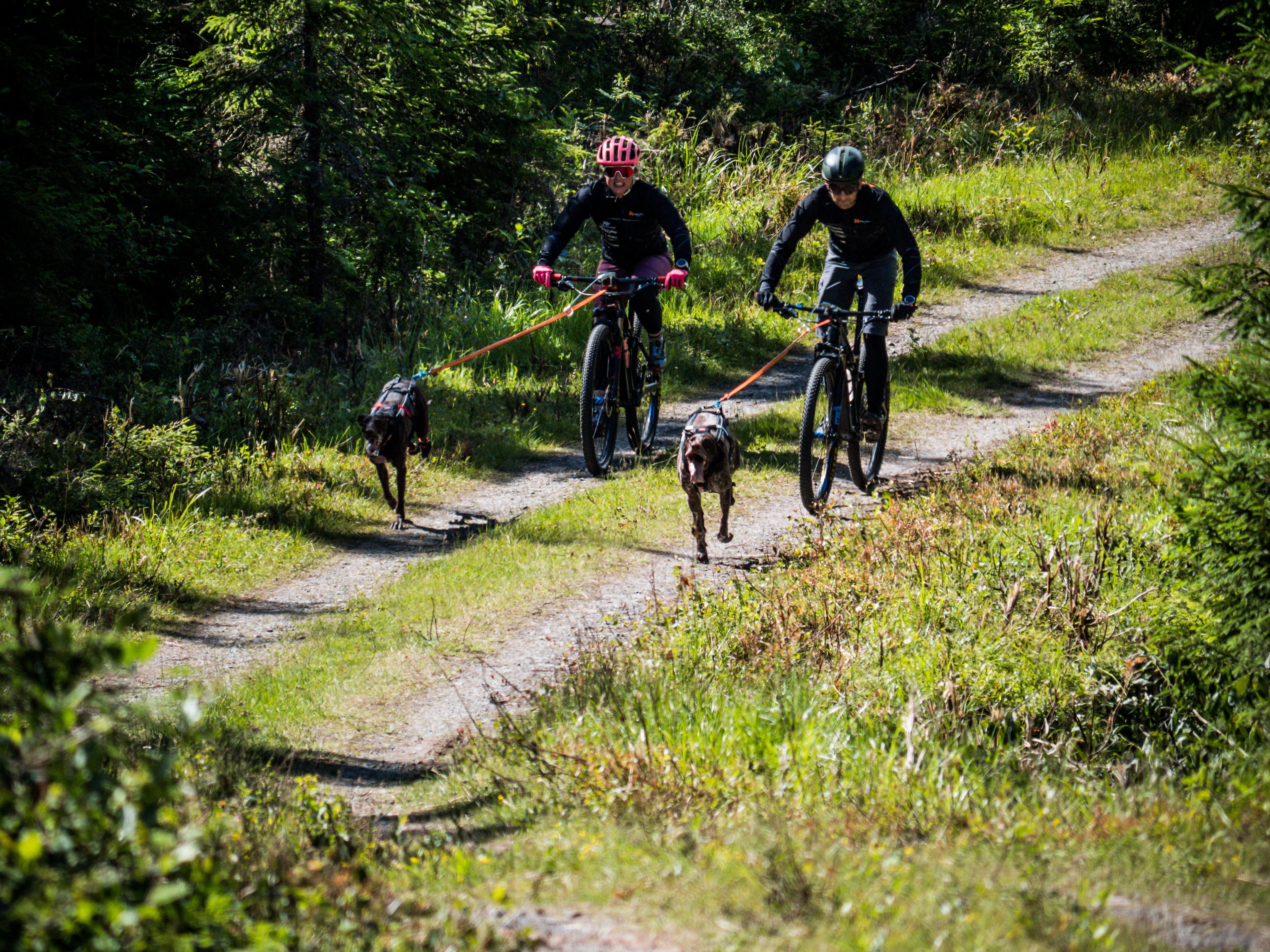| Subtotal | |
|---|---|
| Shipping cost calculated at checkout | |
| Total | |
How to teach a dog to pull
Do you want your dog to pull you when you are running, cycling or skiing? Some dogs are naturals at it, while others might need some help and training to understand this task.
Viktor and Linn Beate Sinding-Larsen have trained many dogs to do this and built up a huge knowledge base about pulling training during the years. The couple has World Champion titles in several disciplines and are gladly sharing their best tips in order to help other dog owners experience the joy of being active together.
Make a plan
First, decide and end goal. Do you want additional help uphill on hiking trips or do you want to compete? If it is the latter, are you thinking about long distance, medium distance or 5 kilometer canicross?
-Your wishes and ambitions are playing a huge role in how the training should be set up and what you should focus on. Set a clear goal based on how you would like your pulling training to look in the future and make a plan on how you want to achieve that. If the dog has special “challenges”, these should also be included in this plan, says Linn Beate.
Good routines should be built in from the very beginnings
-It is important that your dog is waiting until you have put on all your equipment and have given the starting signal. You have to be clear about this from the first training. This way it is easier for the dog to understand what is expected from them.
Differentiate between harness and collar
We want different behavior in different situations, for example, the dog is pulling when we are cycling with them, but not when we are out walking. These are two different tasks and should be clearly distinguished so the dog understands what we expect.

-The equipment you are using in the different situations can create a clear distinction. We are attaching the leash to the collar when we want our dogs to walk nicely, and to the harness, when we want them to pull. It works well, says Linn-Beate.
Dogs that are pulling should use a pulling harness to avoid being uncomfortable, abnormal gait, or in worst cases, getting injured. Pulling harnesses give dogs free motion of movement and distribute the pull force over the body. It is important that the harness is fitted right.
Praise
If the dog is not a natural at pulling it is extra important that it gets a good experience from the very beginning.
-Praise them when they are succeeding, don`t focus so much on the times when they don`t. Try to start with tasks the dog can manage and use vocal praise. To be able to succeed at a task it is also positive for us, humans. Don`t expect too much in the beginning!
If the dog is a bit shy and very careful, the first step can be to reward them once they lean into the harness. Afterwards you can increase the difficulty step by step. You can let the dog go a bit longer and longer each time for example.
Avoid correcting your dog when it does something wrong.
-It is unfair to correct your dog for something that it never learned that is wrong. Instead, focus on avoiding situations where you would need to intervene with correcting.
Start with an easy pace
Dogs don`t have to necessarily run from the very beginning.
-Power walking is a very nice way of starting with pulling! The dog is training up its muscles at a controlled pace. Building up an understanding of good routines can also be easier at a slower pace.
Go next to them
Some dogs think that it is very strange having to walk or run in front of us, especially when they feel the resistance in the harness.
-If the dog is stopping or swirls from side to side, it can help to have someone go together with you. This could be both a human or another dog.
Introduce the dog to the equipment
Bike, scooter, skis, pulka or chains are commonly used for pulling activities with a dog.
-Introduce the dog to the equipment before you attach them to it. Avoid making them unsure or scared. It is not only “plug and play”.

Let the dog sniff and examine the equipment in their own pace.
-We let young dogs get used to the sounds the bike, scooter and ski are making by letting them run free next to us.
Short trainings
One of Viktor`s best tips is to finish the training before the dog is feeling tired.
It is a principle he is using for both his young dogs and racing dogs. He is getting deeper into this topic and telling how their trainings are built up in this podcast episode.
-A dog can be compared to a 3-year old, if the trip is too tiring it is not fun. Create positive associations.
One challenge at a time
Linn Beate says, to make sure the dog succeeds, introduce one new challenge at a time.
-If the dog is stressed about the surroundings, it is clever to do the first training in a closed environment without that type of challenge. Once the dog manages the situation there, additional disturbing elements can be gradually introduced. Then you get a confident dog. Don`t do everything at once. Then the chances of failing are big.
Teachers
Do you have a dog that can be a good example? Involve it in the training. Dogs don`t only learn from us, but also from each other. But be careful, it is also valid for bad habits.

-To run next to or behind another dog can be very motivating! Use training buddies as much as you can. There are many dogs who really get their will to pull awakened by running together with others, says Linn Beate.
Have fun!
For all the steps along the journey and the years to come the most important rule to remember is to always have fun together with your dog.
Good luck with the training!